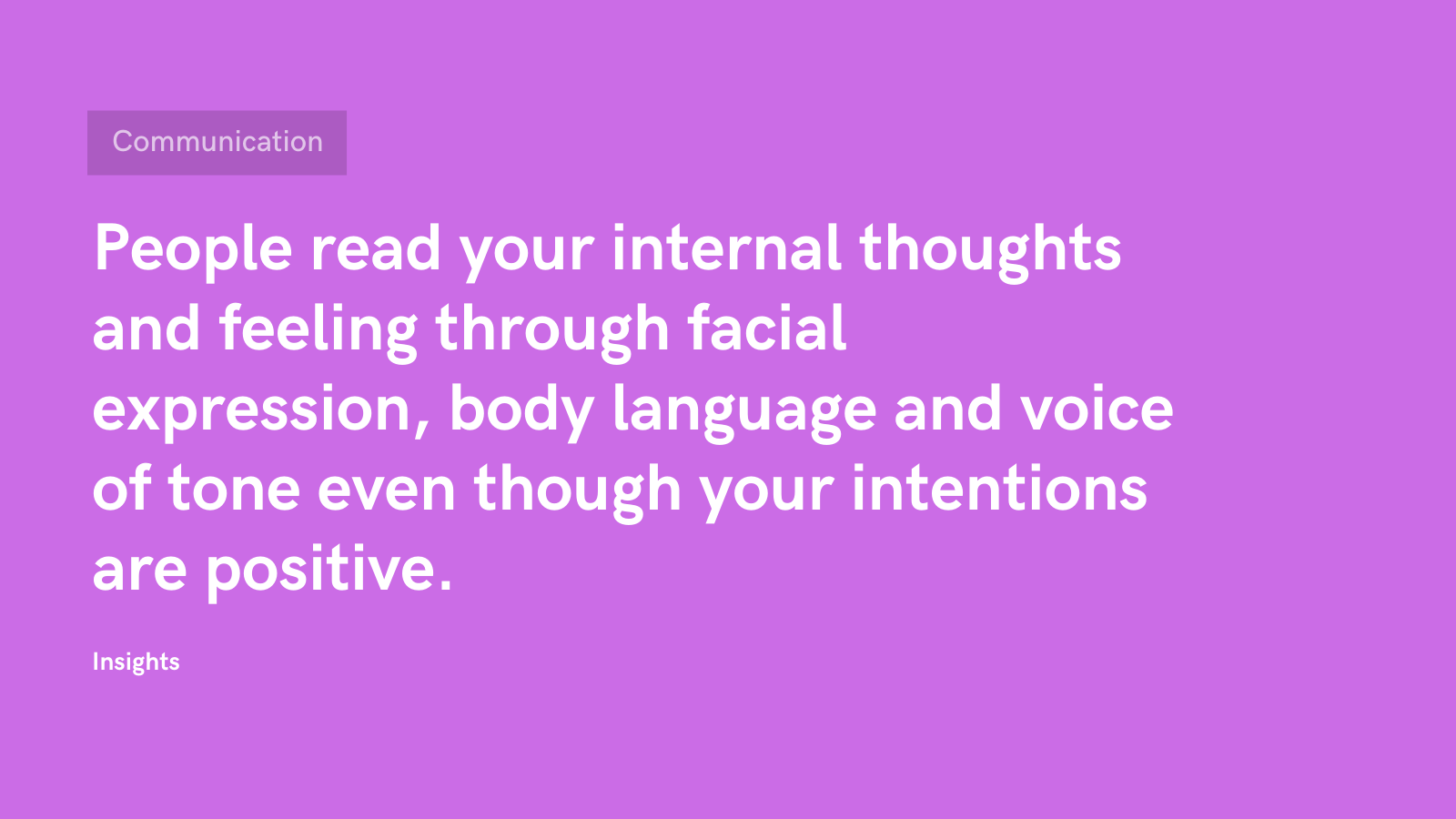
[Image: insight] People read your internal thoughts and feeling through facial expression, body language and voice of tone even though your intentions are positive.
In this post, I will focus on what people see in my thoughts and feelings (arrow 1 - See below).
The Gap Map
In the book "Thanks for the Feedback", the author uses The Gap Map to visualise how your audience read the way we convey our message. The Gap Map highlights 7 key factors to help us discover our blind spots (See the map below - Read from left to right).
We often focus on changing one's behaviour when giving feedback. And, we believe that we can hide our internal thoughts and feelings (arrow 1). In fact, those thoughts and feelings are leaking into my behaviour through our facing expression, tone of voice and body language. (This is the blind spot that people see us, but we don't.)
If my internal thoughts and feelings (arrow 1) and my intention (arrow 2) are not aligned, people interpret feedback through my behaviour (arrow 3). Therefore, they may take feedback differently despite it is good intent.

[Source] The Gap Map (Read from left to right) - Chapter 4 See your blind spot - Thanks for the Feedback
Try this:
Measure others' mood by scanning their facial expression when you receive the information.
Identify facial expression cues to alert yourself and then ask yourself:
What's the agenda?
What's wrong with them?
Reframe your feedback on how to say, not what to say.
